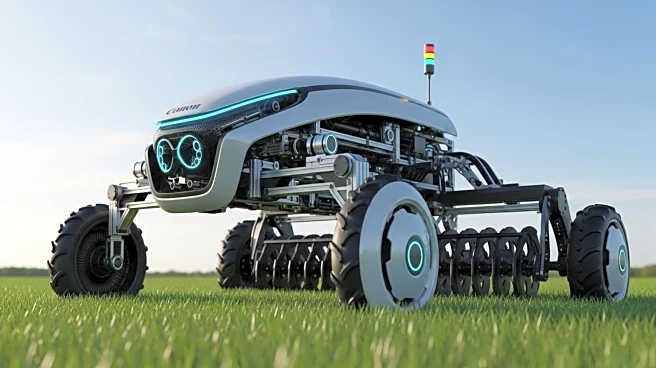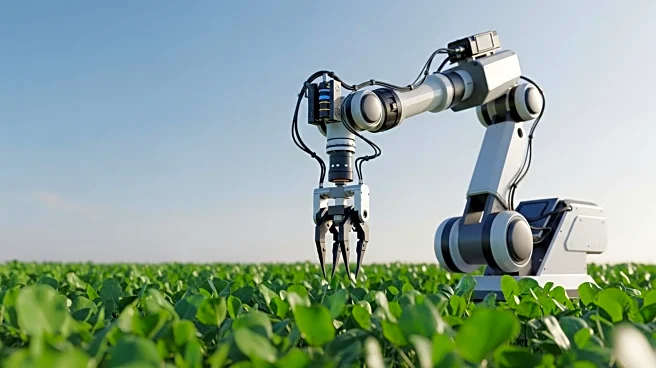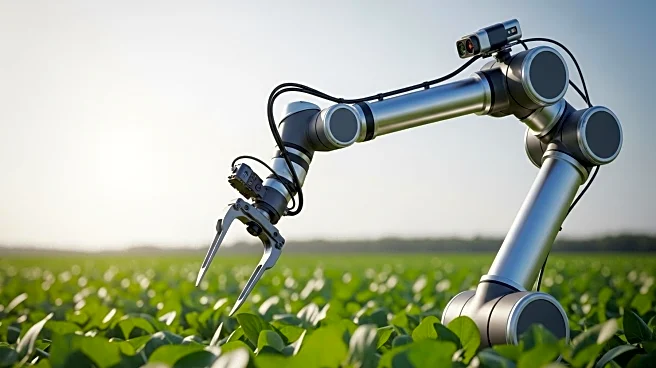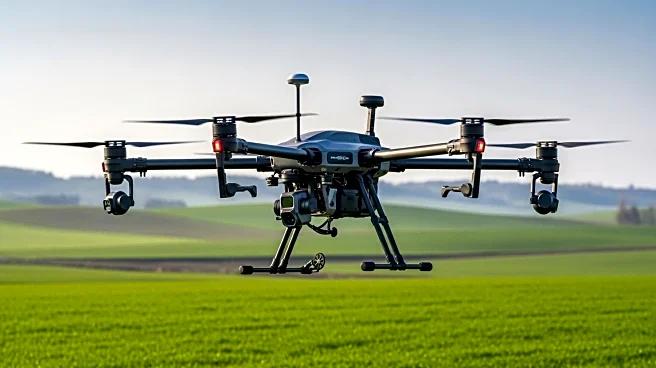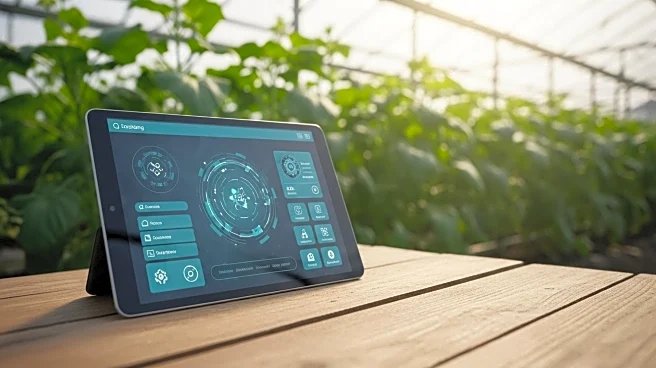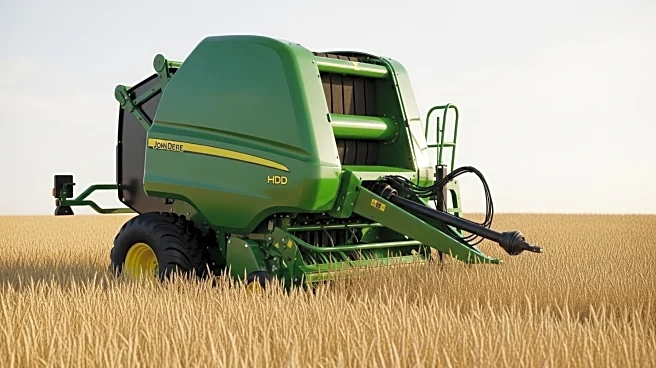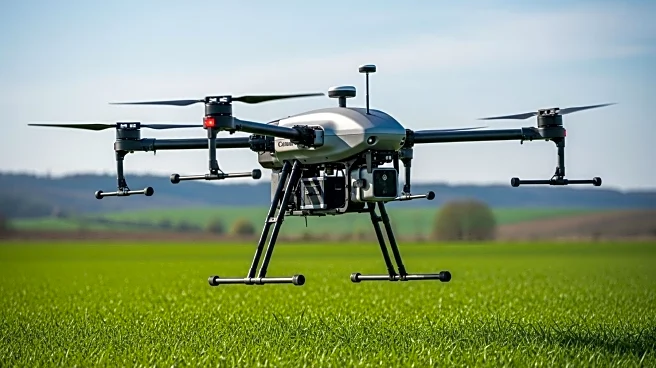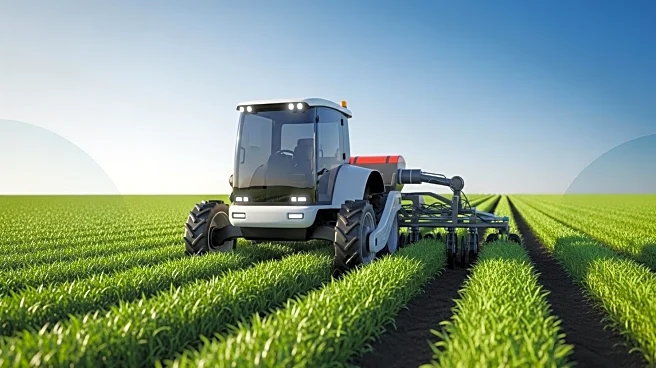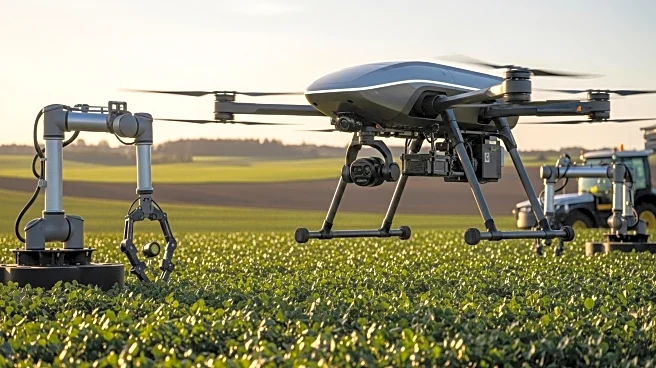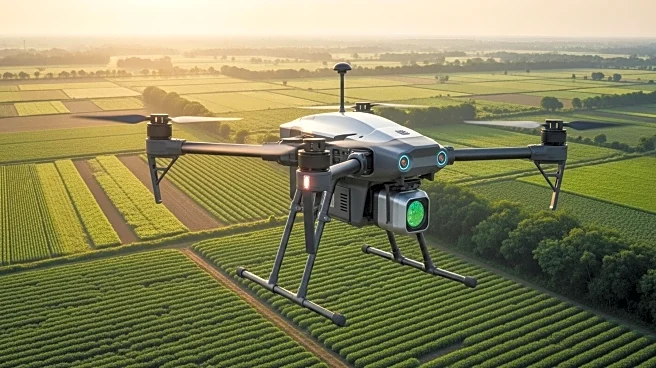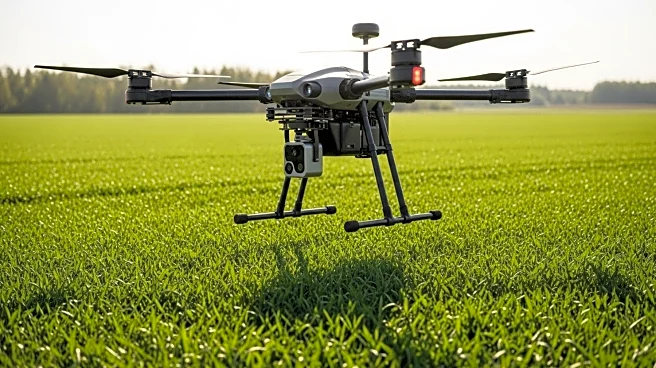What's Happening?
The agriculture robots market is experiencing significant growth, driven by technological advancements and the involvement of key industry players such as John Deere, AG Leader Technology, and Trimble. According to a report by WMR Worldwide Market Reports, the market is segmented by type, including field agriculture, orchard and vineyard, livestock farming, aquaculture, greenhouse farming, soil management, crop monitoring, and harvesting. The application segments include crop monitoring, precision planting, harvesting, weed control, soil analysis, irrigation management, livestock management, and pest control. The report highlights the importance of understanding market dynamics, consumer trends, and competitive positioning to maintain market share. The study also emphasizes the need for companies to adapt to changing market conditions and consumer preferences to remain competitive.
Why It's Important?
The growth of the agriculture robots market is crucial for enhancing productivity and efficiency in the agricultural sector. As the demand for food increases globally, the adoption of robotics in agriculture can help address labor shortages, reduce costs, and improve yield quality. Key players in the market are investing in innovative technologies to meet these demands, which could lead to significant advancements in precision agriculture. This growth also presents opportunities for new entrants and existing companies to expand their market presence and develop new products tailored to specific agricultural needs. The market's expansion could have a positive impact on food security and sustainability, as well as economic growth in regions heavily reliant on agriculture.
What's Next?
As the agriculture robots market continues to evolve, companies are expected to focus on research and development to introduce more advanced and cost-effective solutions. The integration of artificial intelligence and machine learning in agricultural robotics could further enhance the capabilities of these technologies, leading to more precise and efficient farming practices. Additionally, regulatory policies and government support for technological adoption in agriculture could play a significant role in shaping the market's future. Stakeholders, including farmers, technology providers, and policymakers, will need to collaborate to address challenges such as data privacy, interoperability, and the digital divide to fully realize the potential of agriculture robots.
Beyond the Headlines
The rise of agriculture robots also raises ethical and social considerations, such as the impact on employment in rural areas and the need for upskilling the workforce to operate and maintain these technologies. There is also a growing emphasis on ensuring that technological advancements in agriculture are accessible to smallholder farmers and do not exacerbate existing inequalities. The long-term success of agriculture robots will depend on balancing technological innovation with social responsibility and inclusivity.
